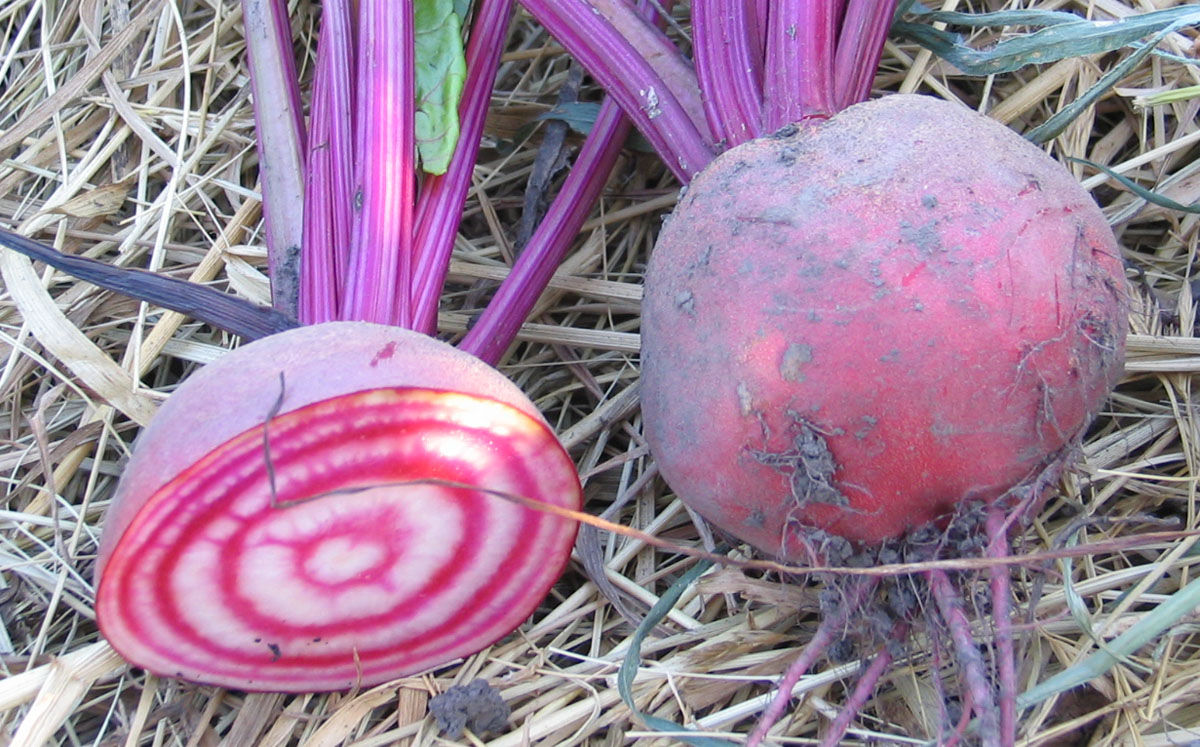Does anything beat beets grown in the home garden? Whether planted for the root crop or the tender greens, this fast-growing vegetable adds color and nutrients to the dinner plate. Iowa State University Extension and Outreach horticulturists offer tips on getting the most out of a planting of beets. For more information, contact the ISU Hortline at 515-294-3108 or [email protected].
When can I sow beet seeds?
Sow beet seeds at a depth of 0.5 to 1 inch in early April in central Iowa. Additional plantings can be made every two to three weeks for a continuous harvest. The last practical planting date for a fall crop is August 1. Rows should be spaced 12 to 18 inches apart. When the seedlings reach a height of 3 to 4 inches, thin the planting. After thinning, plants should be spaced 3 to 4 inches apart.
What is a suitable planting site for beets?
Beets perform best in loose, well-drained soils. Clay soils can be improved by applying and incorporating organic matter, such as compost, into the soil. The planting site should also receive at least six hours of direct sun each day.
What are some good beet varieties for the home garden?
Suggested beet cultivars for Iowa include ‘Avalanche’ (white, round), ‘Chioggia Guardsmark’ (red skin, flesh consists of red and white concentric rings), ‘Cylindra’ (dark red, cylindrical), ‘Detroit Dark Red’ (dark red, globe-shaped), ‘Eagle’ (dark red, round), ‘Kestrel’ (dark red, globe-shaped), ‘Merlin’ (dark red, round), ‘Red Ace’ (dark red, globe-shaped), ‘Ruby Queen’ (deep red, globe-shaped), and ‘Touchstone Gold’ (orange skin, gold flesh, round).
What can be done to help ensure a good beet crop?
The most common problem growing beets is not thinning the planting. Proper spacing is essential for a quality crop. Thinning is especially important for beets because every beet “seed” is actually a fruit that contains several seeds. Thin the beet planting when the seedlings are 3 to 4 inches tall. Remove the smaller, weaker seedlings and leave the stronger, more vigorous plants. After thinning, plants should be spaced 3 to 4 inches apart.
Poor germination can also be a problem. Poor germination may result from the crusting of the soil surface or dry soil conditions. Crusting can be prevented by lightly mulching the seeded row with sawdust, vermiculite or dry grass clippings. Gently water the row during dry weather to promote germination.

